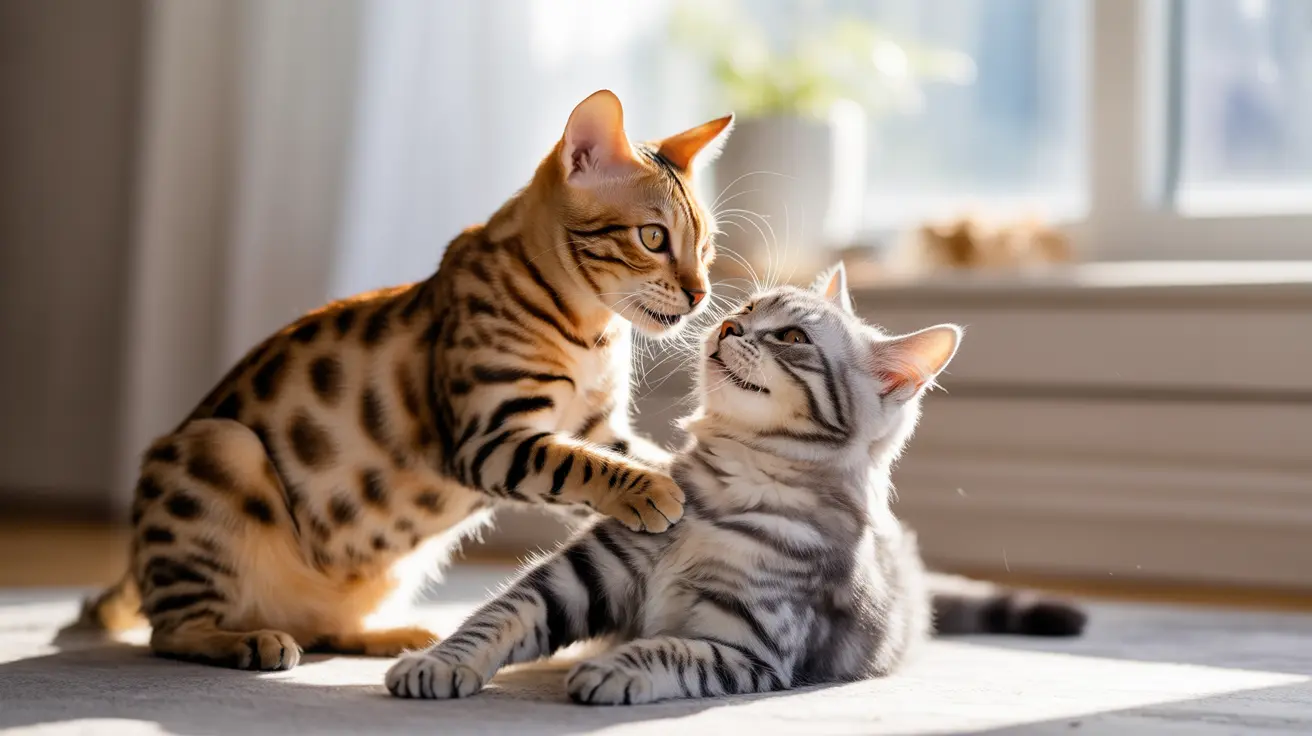The Natural Instinct Behind Neck Biting
Cats are natural predators, and neck biting is deeply rooted in their hunting instincts. In the wild, cats target their prey's neck to quickly immobilize them. This instinctual behavior carries over into domestic settings, though usually in much gentler forms during play and social interactions.
Play Fighting and Social Development
Young cats and kittens frequently engage in neck biting during play sessions. This behavior helps them develop crucial hunting skills and learn appropriate social boundaries. During these play fights, you'll notice:
- Gentle biting without breaking skin
- Taking turns being the "attacker"
- Relaxed body language
- Absence of aggressive vocalizations
Dominance and Territory Establishment
Adult cats may use neck biting to establish and maintain social hierarchies, especially in multi-cat households. This behavior typically intensifies when:
- A new cat joins the household
- Resources like food or litter boxes are limited
- Changes occur in the home environment
- Cats reach social maturity
Mating Behavior
During mating, male cats instinctively bite the female's neck as part of the reproduction process. This behavior helps immobilize the female and ensures successful mating. If you have unspayed or unneutered cats, you're more likely to observe this type of neck biting.
When Neck Biting Becomes Concerning
While most neck biting is harmless, certain signs indicate a need for intervention:
- Aggressive vocalizations (growling, hissing)
- Cats showing signs of distress
- Visible injuries or broken skin
- One cat consistently avoiding the other
- Changes in eating or litter box habits
Prevention and Management
To prevent problematic neck biting, consider these strategies:
- Provide multiple resources (food bowls, litter boxes, scratching posts)
- Create vertical spaces for cats to escape
- Maintain regular playtime to reduce excess energy
- Consider spaying/neutering to reduce mating-related behaviors
- Introduce new cats gradually and properly
Frequently Asked Questions
Why do cats bite each other's necks without causing injury?
Cats have excellent bite control and usually regulate the pressure when biting during play or social interactions. This controlled biting is part of their natural communication and rarely causes harm unless the cat is being aggressive.
How can I tell if my cats' neck biting is playful or aggressive?
Playful neck biting is accompanied by relaxed body language, taking turns, and no signs of distress. Aggressive biting involves hissing, growling, flattened ears, and one cat trying to escape the interaction.
Is neck biting a sign of dominance or territorial behavior among cats?
Yes, cats often use neck biting to establish dominance and mark territory, especially in multi-cat households. This behavior helps create and maintain social hierarchies.
Why do male cats bite female cats on the neck during mating?
Male cats bite females' necks during mating to hold them in place and prevent movement. This is an instinctual behavior that helps ensure successful mating.
When should I be concerned about my cat biting another cat's neck and seek veterinary advice?
Seek veterinary advice if you notice aggressive biting that causes injury, significant behavioral changes, signs of distress in either cat, or if the behavior suddenly increases in frequency or intensity.
Conclusion
Neck biting is a natural part of feline behavior that serves multiple purposes in cat communication and social interaction. While usually harmless, understanding the context and monitoring your cats' body language can help you determine when intervention might be necessary. By providing appropriate resources and environment enrichment, you can help ensure your cats maintain healthy social relationships.






